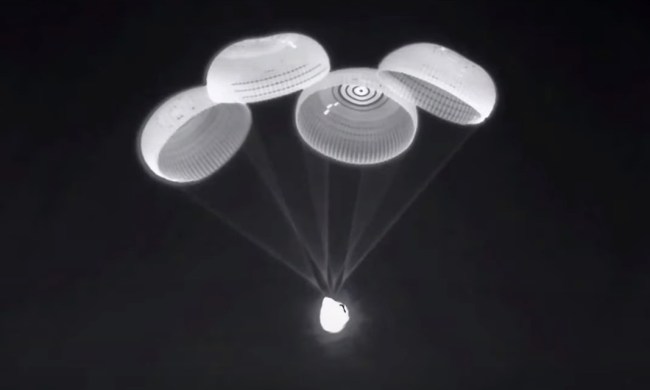SpaceX has offered an update on the massive explosion which destroyed the Starship spacecraft on a test stand on Wednesday.
The dramatic explosion took place at SpaceX’s Starbase facility near Boca Chica, Texas, during preparations for the Starship rocket’s 10th test flight, which was expected to take place in the coming weeks. No one was reported killed or injured in the incident.
To be clear, the Starship vehicle comprises the upper-stage Starship spacecraft and the first-stage Super Heavy booster, and it was the upper-stage spacecraft that blew up.
In a statement shared on Thursday, SpaceX shared some more details about what happened.
“After completing a single-engine static fire earlier this week, the vehicle was in the process of loading cryogenic propellant for a six-engine static fire when a sudden energetic event resulted in the complete loss of Starship and damage to the immediate area surrounding the stand,” it said. “The explosion ignited several fires at the test site which remains clear of personnel and will be assessed once it has been determined to be safe to approach.”
The spaceflight company said that as for all of its rocket testing, a safety zone had been established around the test site and had been maintained throughout the operation, adding that there had been no reported injuries and all personnel had been accounted for.
SpaceX confirmed that engineering teams are now actively investigating the incident and will follow established procedures to determine exactly what happened.
It said that its initial analysis “indicates the potential failure of a pressurized tank known as a COPV, or composite overwrapped pressure vessel, containing gaseous nitrogen in Starship’s nosecone area,” but stressed that the full data review is ongoing. It added that there’s no risk to its workhorse Falcon 9 rocket as it has a different design.
While the explosion is clearly a setback for the Elon Musk-led company, its long-term impact remains to be seen.
It’s worth noting that SpaceX’s development strategy embraces rapid iterative testing, a method that accepts failure as part of the process. The company has always said that such setbacks are expected during the development of complex new rockets and that it’s committed to learning from each incident. The overall timeline for Starship’s operational missions, including voyages to the moon and even Mars, may be affected, but the company is unlikely to abandon its ambitious goals.


